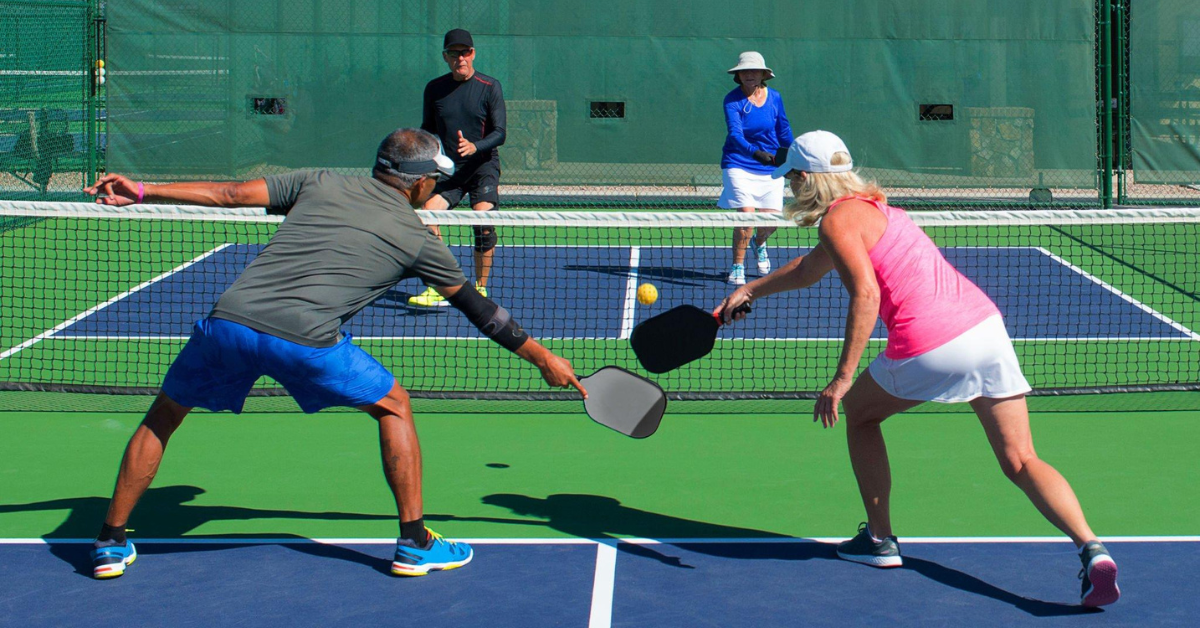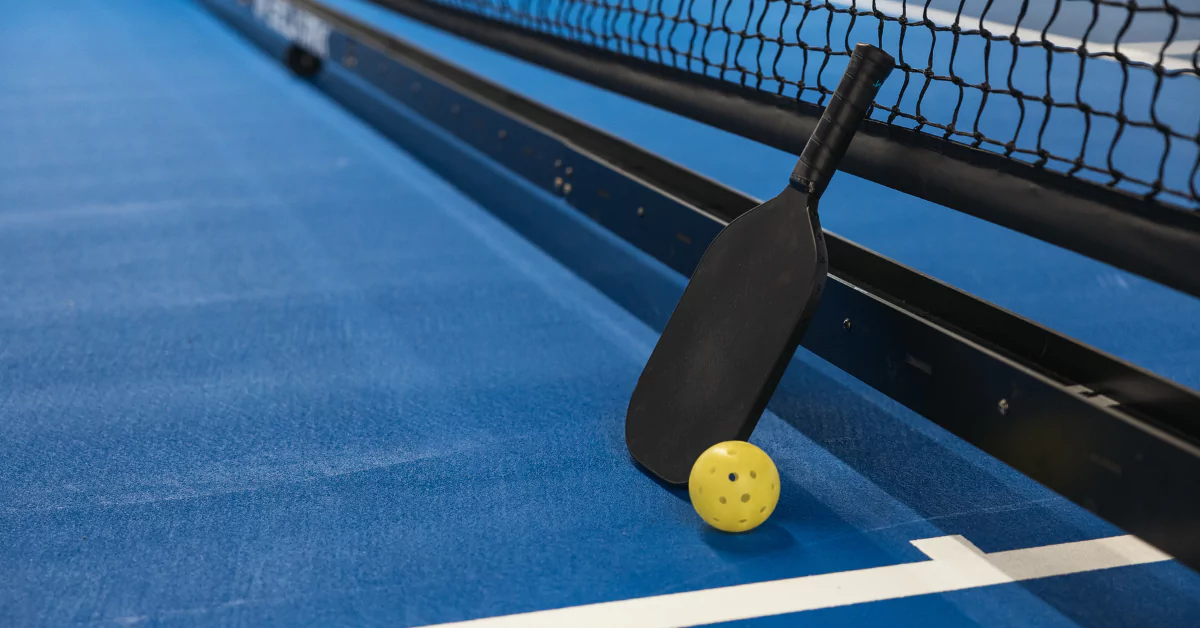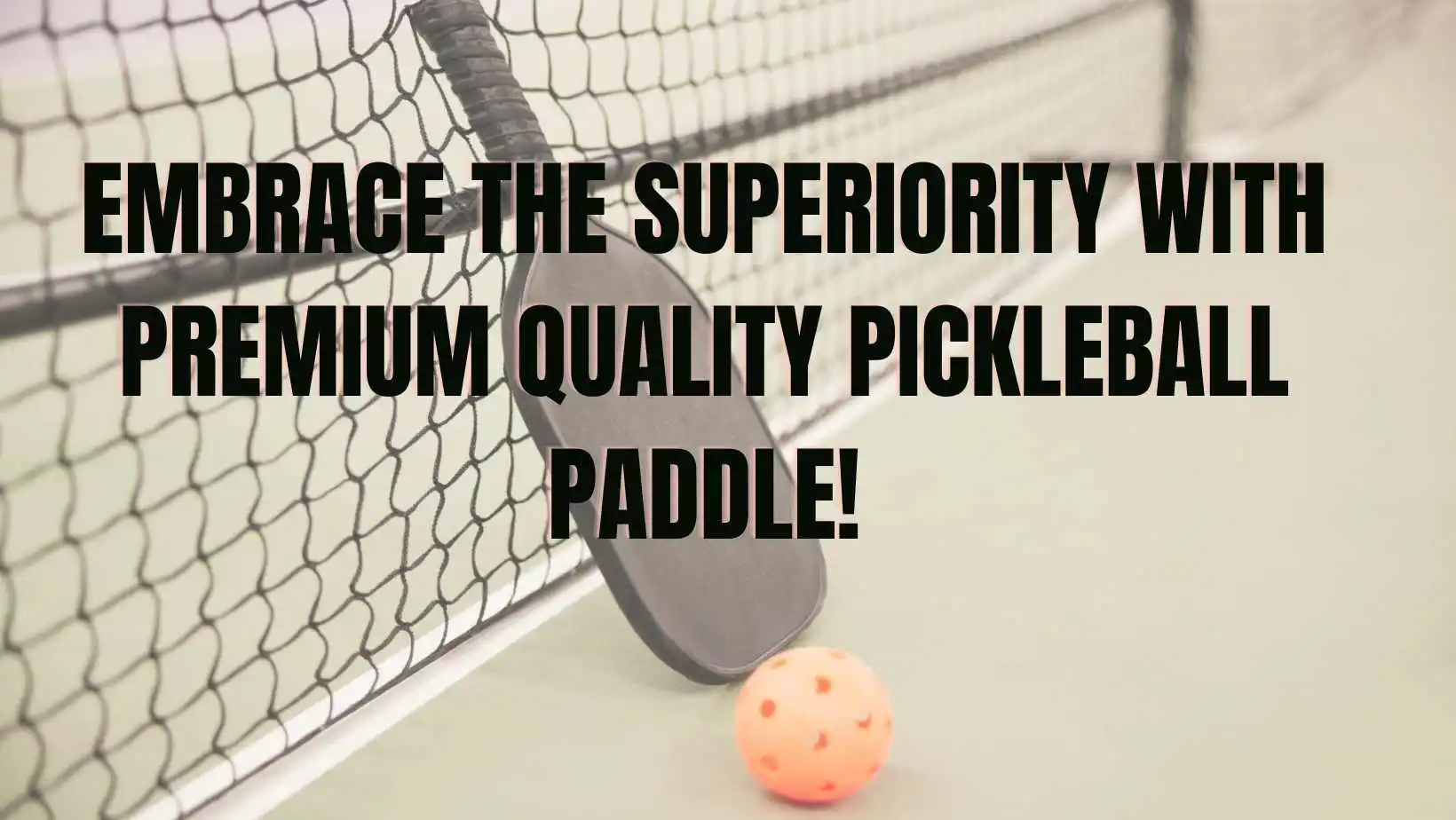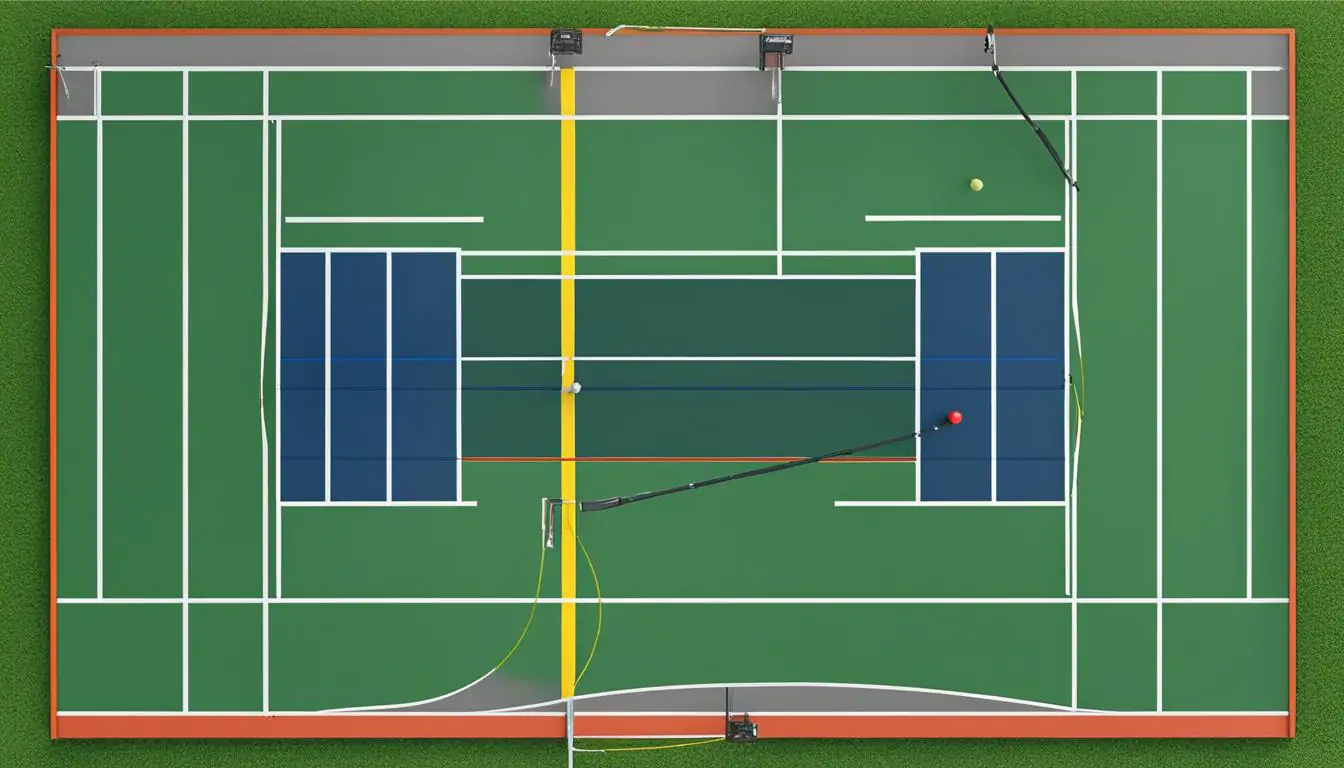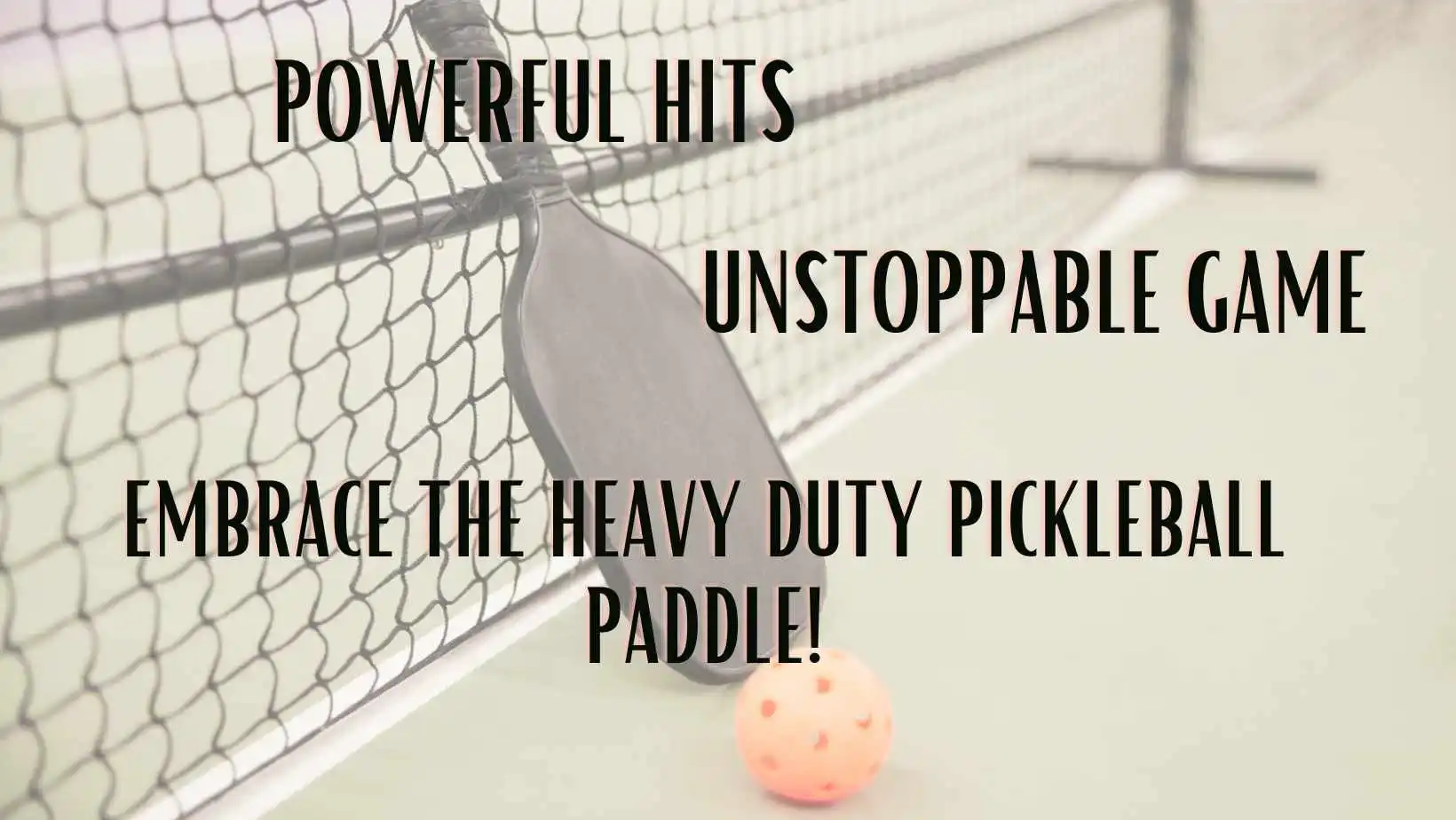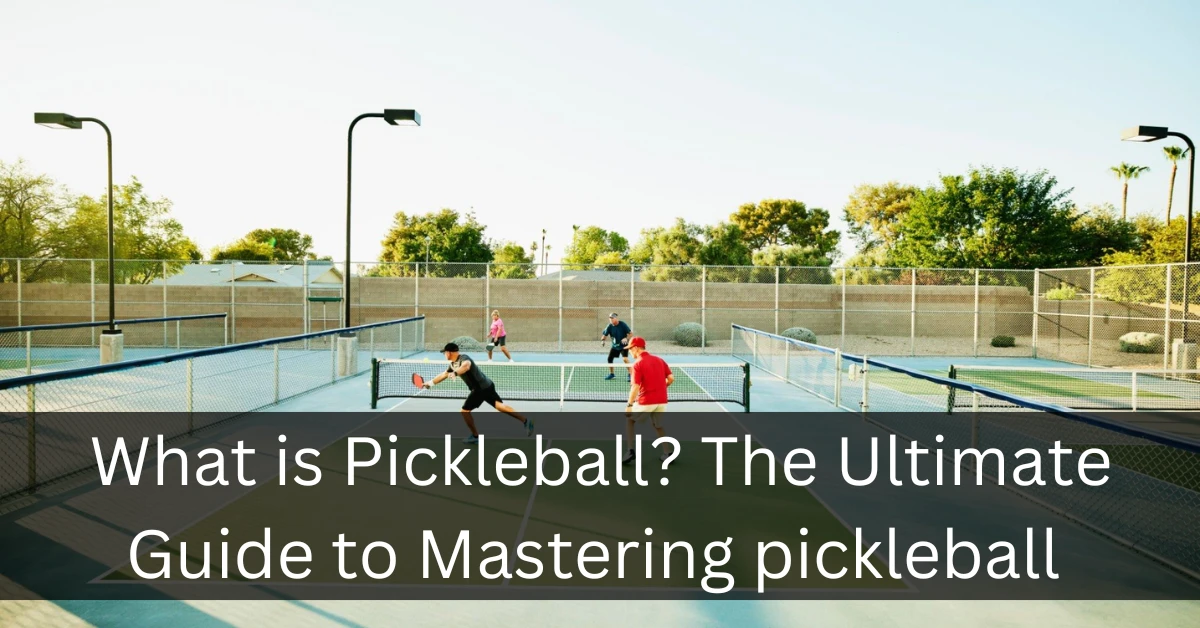Pickleball Third Shot Strategy
In this article, you will find out the two main options for the Pickleball third shot: the drop and the drive. We will explain what they are, when to use them, and how to improve them. We will also compare the third shot strategy for singles and doubles, and look at how the pros use the third shot in their games. By the end of this article, you will have a better understanding of how to master the pickleball third shot and win more points.
What is the Third Shot Drop?
The third shot drop is a soft shot aimed at the opponent’s Kitchen, which is the non-volley zone that extends 7 feet from the net on both sides of the court. The third shot drop is meant to prevent the opponents from attacking and give the serving team time to advance to the net and gain control of the rally. The third shot drop is hit with a lot of spin and arc, so it lands softly in the Kitchen, making it difficult for the opponents to return.
To hit a good third shot drop, you need to be intentional with placement, hit with forward momentum, and not stand inside the baseline after serving. The goal of the serving team is to score points, and using the third shot drop at the right time will give them the best chance to do so.
What is the Third Shot Drive?
The third shot drive is a hard and low shot aimed at the opponent’s body or feet, or at an open space on the court. The third shot drive is meant to set up an easy fifth shot drop or to win a point quickly. The third shot drive is hit with power and accuracy, with the intention of forcing the opponents to hit a weak return or miss altogether.
To hit a good third shot drive, you need to be confident with your stroke, look for an opportunity, and not overhit. The third shot drive can be a powerful weapon in your arsenal, but it can also backfire if you use it at the wrong time or against skilled opponents.
Which is Better?
The key question when deciding between the third shot drop and drive is when to use each one. According to statistics, the third shot drive is used 34% of the time in professional doubles pickleball. However, this doesn’t mean that it’s always the better option. It’s important to consider factors such as:
- The opponents’ positioning: If they are close to the net or out of position, you can try to drive them back or catch them off guard. If they are far from the net or well-positioned, you can try to drop them into the Kitchen.
- The opponents’ skill level: If they are good at volleying or defending drives, you can try to drop them into unforced errors. If they are weak at handling drops or moving forward, you can try to drive them into mistakes.
- Your own skill level: If you are confident with your drives or have a strong forehand or backhand, you can try to use them as weapons. If you are more comfortable with your drops or have a better touch or finesse, you can try to use them as tools.
- The score: If you are ahead or tied, you can try to be more aggressive and drive more often. If you are behind or close, you can try to be more conservative and drop more often.
- The wind: If there is a strong wind blowing in your favor, you can try to use it to your advantage and drive more often. If there is a strong wind blowing against you, you can try to use it to your advantage and drop more often.
The bottom line is that there is no definitive answer to which one is better. The best players are able to read the game and make split-second decisions on which shot to use. The third shot drop and drive both have their place, and the teams that use them at the right times will give themselves the best chance to win.
Pickleball Third Shot Strategy Singles vs Doubles
The third shot strategy for singles and doubles is different, because the dynamics of the game are different. In singles, there is more space on the court, more movement, and more endurance involved. In doubles, there is less space on the court, less movement, and more teamwork involved.
Here are some of the main differences between the third shot strategy for singles and doubles:
| Singles | Doubles |
| More drives than drops | More drops than drives |
| Drives are used to create openings or win points | Drives are used to set up drops or surprise opponents |
| Drops are used to slow down the pace or recover position | Drops are used to gain net position or neutralize opponents |
| Net position is not as important as court coverage | Net position is crucial for controlling the rally |
| More variation in shot selection and placement | More consistency in shot selection and placement |
As you can see, the third shot strategy for singles and doubles is not the same, and it requires different skills and tactics. However, both singles and doubles players can benefit from practicing both types of shots, as they can help them improve their overall game.
How Often do the Pros Drive and Drop the Third Shot?
Professional pickleball players use a combination of third shot drops and drives, depending on the situation. As we mentioned earlier, the third shot drive is used 34% of the time in professional doubles pickleball. However, this percentage can vary depending on factors such as:
- The level of competition: The higher the level of competition, the more likely the pros are to use drives, as they can exploit small weaknesses or create big opportunities. The lower the level of competition, the more likely the pros are to use drops, as they can avoid unnecessary risks or force big errors.
- The style of play: The more aggressive the style of play, the more likely the pros are to use drives, as they can impose their game or dominate the rally. The more defensive the style of play, the more likely the pros are to use drops, as they can counterattack or defend the rally.
- The personal preference: Some pros prefer to use drives more often than drops, as they feel more confident or comfortable with them. Some pros prefer to use drops more often than drives, as they feel more confident or comfortable with them.
To illustrate how often the pros drive and drop the third shot, let’s look at some examples from recent tournaments:
- In the 2021 APP Hilton Head Open Men’s Doubles Gold Medal Match, Ben Johns and Collin Johns faced Tyson McGuffin and Zane Navratil. Ben Johns and Collin Johns used 29% drives and 71% drops in their third shots. Tyson McGuffin and Zane Navratil used 36% drives and 64% drops in their third shots. Ben Johns and Collin Johns won 11-9, 11-8.
- In the 2021 APP Chicago Open Women’s Doubles Gold Medal Match, Simone Jardim and Lucy Kovalova faced Catherine Parenteau and Jessie Irvine. Simone Jardim and Lucy Kovalova used 32% drives and 68% drops in their third shots. Catherine Parenteau and Jessie Irvine used 28% drives and 72% drops in their third shots. Simone Jardim and Lucy Kovalova won 11-7, 11-4.
- In the 2021 APP Chicago Open Mixed Doubles Gold Medal Match, Ben Johns and Simone Jardim faced Matt Wright and Lucy Kovalova. Ben Johns and Simone Jardim used 41% drives and 59% drops in their third shots. Matt Wright and Lucy Kovalova used 38% drives and 62% drops in their third shots. Ben Johns and Simone Jardim won 11-7, 11-6.
These examples show that even among the top players in the world, there is no fixed ratio of drives and drops in their third shots. They adjust their strategy according to their opponents, their conditions, and their preferences.
When Should you Drive the Third Shot?
The third shot drive can be a very effective shot when used at the right time. Here are some situations when you should consider driving the third shot:
- When your opponents stay back: If your opponents do not move forward after returning your serve, you can try to drive them back even further or hit a winner past them. This will put pressure on them to come to the net or lose points.
- When your opponents are out of position: If your opponents are not well-balanced or aligned after returning your serve, you
- you can try to drive them into a mistake or a defensive shot. This will give you an advantage in the rally or a chance to finish the point.
- When your opponents are too close to the net: If your opponents are crowding the net or leaning forward after returning your serve, you can try to drive them off the net or hit a lob over them. This will force them to retreat or lose position.
- When you have a high ball: If your opponents return your serve with a high or weak ball, you can try to drive it with power and placement. This will catch them off guard or overwhelm them.
- When you want to surprise your opponents: If your opponents are expecting a drop shot from you, you can try to drive it instead. This will break their rhythm or disrupt their strategy.
These are some of the scenarios when driving the third shot can be a smart move. However, you should also be aware of the risks and challenges of driving the third shot, and avoid doing it when it’s not appropriate.
- When you should NOT drive the third shot: Driving the third shot can also be a risky or ineffective shot when used at the wrong time. Here are some situations when you should avoid driving the third shot:
- When your opponents are good at volleying: If your opponents are skilled at handling fast and low balls, you should not try to drive them, as they will likely return them with ease or counterattack. This will put you in a defensive or losing position.
- When your opponents are ready for your drive: If your opponents are anticipating your drive or have a good reaction time, you should not try to drive them, as they will likely block or redirect your shot. This will neutralize your advantage or create an opening for them.
- When you have a low ball: If your opponents return your serve with a low or strong ball, you should not try to drive it, as you will likely hit it into the net or out of bounds. This will give away a point or a serve.
- When you are not confident with your drive: If you are not comfortable with your drive or have a weak forehand or backhand, you should not try to drive it, as you will likely make a mistake or a poor shot. This will cost you a point or a rally.
These are some of the scenarios when driving the third shot can be a bad move. However, you should also be aware of the benefits and opportunities of driving the third shot, and use it when it’s appropriate.
Third Shot Drop Strategy and Tips
The third shot drop is one of the most essential shots in pickleball, as it can help you gain net position and control the rally. However, it is also one of the most difficult shots to master, as it requires a lot of touch and precision. Here are some tips and strategies to improve your third shot drop:
1.) Move from your shoulder — not your wrists — when executing a third shot drop: One of the common mistakes that players make when hitting a third shot drop is using too much wrist action. This can cause inconsistency, loss of control, and lack of spin. Instead, you should use your shoulder as the main source of power and movement, and keep your wrist firm and stable. This will help you generate more spin, accuracy, and consistency in your third shot drop.
2.) Using follow-through extension in your third shot drop execution: Another common mistake that players make when hitting a third shot drop is stopping their swing too soon or too abruptly. This can cause loss of speed, height, and depth in their shot. Instead, you should extend your follow-through towards your target, and keep your paddle head above your wrist. This will help you create more arc, distance, and softness in your third shot drop.
3.) Footwork matters when hitting a third shot drop: A final common mistake that players make when hitting a third shot drop is having poor footwork or balance. This can cause loss of stability, timing, and direction in their shot. Instead, you should use small steps to adjust your position, and keep your feet shoulder-width apart and parallel to the baseline. This will help you maintain balance, rhythm, and alignment in your third shot drop.
These are some of the tips and strategies that can help you improve your third shot drop. However, you should also practice regularly and experiment with different angles, speeds, and spins to find what works best for you.
Final Thoughts
The pickleball third shot is one of the most important shots in the game, as it can determine the outcome of a point or a rally. The two main options for the third shot are the drop and the drive, and both have their advantages and disadvantages. The best players are able to use both types of shots effectively and strategically, depending on the situation.
To master the pickleball third shot strategy, you need to consider factors such as:
- The opponents’ positioning
- The opponents’ skill level
- Your own skill level
- The score
- The wind
You also need to practice both types of shots regularly and learn from your mistakes and successes. By doing so, you will be able to develop a versatile and powerful game that will help you win more points and matches.
FAQs about the pickleball third shot strategy
How do you hit the third shot in pickleball?
To hit the third shot in pickleball, you need to decide whether to use a drop or a drive. A drop is a soft shot aimed at the opponent’s Kitchen that prevents them from attacking and allows you to advance to the net. A drive is a hard and low shot aimed at the opponent’s body or feet that sets up an easy fifth shot drop or wins a point quickly.
To hit a good third shot drop, you need to:
- Be intentional with placement
- Hit with forward momentum
- Not stand inside the baseline after serving
To hit a good third shot drive, you need to:
- Be confident with your stroke
- Look for an opportunity
- Not overhit
What to do against 3rd shot drive pickleball?
To defend against a third shot drive in pickleball, you need to:
- Be ready for the drive
- Use a continental grip
- Keep your paddle up and in front of you
- Bend your knees and stay low
- Move your feet and stay balanced
- Block or redirect the drive
- Recover quickly and move forward
How can I improve my third shot drops?
To improve your third shot drops, you need to:
- Move from your shoulder — not your wrists — when executing a third shot drop
- Use follow-through extension in your third shot drop execution
- Use footwork to adjust your position and balance
- Practice regularly and experiment with different angles, speeds, and spins
When should you not hit a third shot drop?
You should not hit a third shot drop when:
- Your opponents are far from the net or well-positioned
- Your opponents are weak at handling drops or moving forward
- You have a high or weak ball
- You are confident with your drives or have a strong forehand or backhand.

